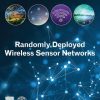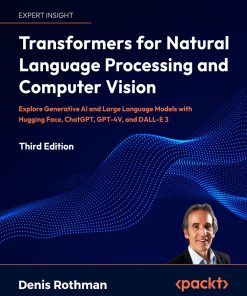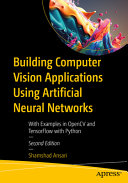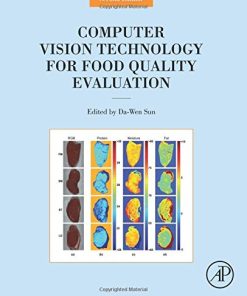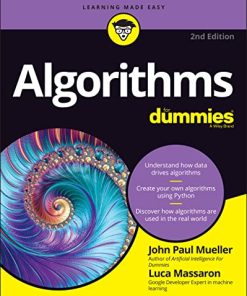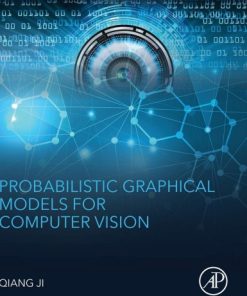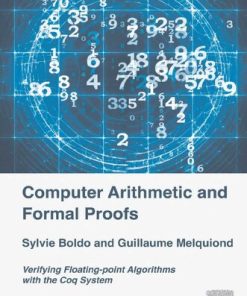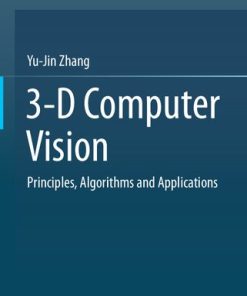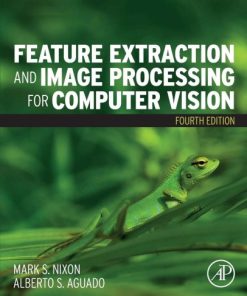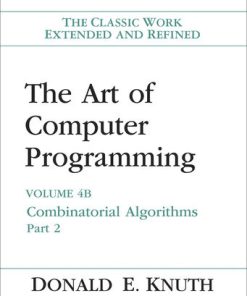Computer vision theory algorithms practicalities 5th Edition by E. R. 012809575X 9780128095751
$50.00 Original price was: $50.00.$25.00Current price is: $25.00.
Computer vision: theory, algorithms, practicalities 5th Edition by E. R. Davies – Ebook PDF Instant Download/DeliveryISBN: 012809575X 9780128095751
Full download Computer vision: theory, algorithms, practicalities 5th Edition after payment.
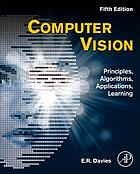
Product details:
ISBN-10 : 012809575X
ISBN-13 : 9780128095751
Author : E. R. Davies
Computer Vision: Principles, Algorithms, Applications, Learning (previously entitled Computer and Machine Vision) clearly and systematically presents the basic methodology of computer vision, covering the essential elements of the theory while emphasizing algorithmic and practical design constraints. This fully revised fifth edition has brought in more of the concepts and applications of computer vision, making it a very comprehensive and up-to-date text suitable for undergraduate and graduate students, researchers and R&D engineers working in this vibrant subject.
Computer vision: theory, algorithms, practicalities 5th Table of contents:
Chapter 1. Vision, the challenge
Abstract
1.1 Introduction—Man and His Senses
1.2 The Nature of Vision
1.3 From Automated Visual Inspection to Surveillance
1.4 What This Book Is About
1.5 The Part Played by Machine Learning
1.6 The Following Chapters
1.7 Bibliographical Notes
Part 1: Low-level vision
Part 1. Low-level vision
Chapter 2. Images and imaging operations
Abstract
2.1 Introduction
2.2 Image Processing Operations
2.3 Convolutions and Point Spread Functions
2.4 Sequential Versus Parallel Operations
2.5 Concluding Remarks
2.6 Bibliographical and Historical Notes
2.7 Problems
Chapter 3. Image filtering and morphology
Abstract
3.1 Introduction
3.2 Noise Suppression by Gaussian Smoothing
3.3 Median Filters
3.4 Mode Filters
3.5 Rank Order Filters
3.6 Sharp–Unsharp Masking
3.7 Shifts Introduced by Median Filters
3.8 Shifts Introduced by Rank Order Filters
3.9 The Role of Filters in Industrial Applications of Vision
3.10 Color in Image Filtering
3.11 Dilation and Erosion in Binary Images
3.12 Mathematical Morphology
3.13 Morphological Grouping
3.14 Morphology in Grayscale Images
3.15 Concluding Remarks
3.16 Bibliographical and Historical Notes
3.17 Problems
Chapter 4. The role of thresholding
Abstract
4.1 Introduction
4.2 Region-Growing Methods
4.3 Thresholding
4.4 Adaptive Thresholding
4.5 More Thoroughgoing Approaches to Threshold Selection
4.6 The Global Valley Approach to Thresholding
4.7 Practical Results Obtained Using the Global Valley Method
4.8 Histogram Concavity Analysis
4.9 Concluding Remarks
4.10 Bibliographical and Historical Notes
4.11 Problems
Chapter 5. Edge detection
Abstract
5.1 Introduction
5.2 Basic Theory of Edge Detection
5.3 The Template Matching Approach
5.4 Theory of 3×3 Template Operators
5.5 The Design of Differential Gradient Operators
5.6 The Concept of a Circular Operator
5.7 Detailed Implementation of Circular Operators
5.8 The Systematic Design of Differential Edge Operators
5.9 Problems With the Above Approach—Some Alternative Schemes
5.10 Hysteresis Thresholding
5.11 The Canny Operator
5.12 The Laplacian Operator
5.13 Concluding Remarks
5.14 Bibliographical and Historical Notes
5.15 Problems
Chapter 6. Corner, interest point, and invariant feature detection
Abstract
6.1 Introduction
6.2 Template Matching
6.3 Second-Order Derivative Schemes
6.4 A Median Filter–based Corner Detector
6.5 The Harris Interest Point Operator
6.6 Corner Orientation
6.7 Local Invariant Feature Detectors and Descriptors
6.8 Concluding Remarks
6.9 Bibliographical and Historical Notes
6.10 Problems
Chapter 7. Texture analysis
Abstract
7.1 Introduction
7.2 Some Basic Approaches to Texture Analysis
7.3 Graylevel Co-occurrence Matrices
7.4 Laws’ Texture Energy Approach
7.5 Ade’s Eigenfilter Approach
7.6 Appraisal of the Laws and Ade approaches
7.7 Concluding Remarks
7.8 Bibliographical and Historical Notes
Part 2: Intermediate-level vision
Part 2. Intermediate-level vision
Chapter 8. Binary shape analysis
Abstract
8.1 Introduction
8.2 Connectedness in Binary Images
8.3 Object Labeling and Counting
8.4 Size Filtering
8.5 Distance Functions and Their Uses
8.6 Skeletons and Thinning
8.7 Other Measures for Shape Recognition
8.8 Boundary Tracking Procedures
8.9 Concluding Remarks
8.10 Bibliographical and Historical Notes
8.11 Problems
Chapter 9. Boundary pattern analysis
Abstract
9.1 Introduction
9.2 Boundary Tracking Procedures
9.3 Centroidal Profiles
9.4 Problems With the Centroidal Profile Approach
9.5 The (s,ψ) Plot
9.6 Tackling the Problems of Occlusion
9.7 Accuracy of Boundary Length Measures
9.8 Concluding Remarks
9.9 Bibliographical and Historical Notes
9.10 Problems
Chapter 10. Line, circle, and ellipse detection
Abstract
10.1 Introduction
10.2 Application of the Hough Transform to Line Detection
10.3 The Foot-of-Normal Method
10.4 Using RANSAC for Straight Line Detection
10.5 Location of Laparoscopic Tools
10.6 Hough-Based Schemes for Circular Object Detection
10.7 The Problem of Unknown Circle Radius
10.8 Overcoming the Speed Problem
10.9 Ellipse Detection
10.10 Human Iris Location
10.11 Concluding Remarks
10.12 Bibliographical and Historical Notes
10.13 Problems
Chapter 11. The generalized Hough transform
Abstract
11.1 Introduction
11.2 The Generalized Hough Transform
11.3 The Relevance of Spatial Matched Filtering
11.4 Gradient Weighting Versus Uniform Weighting
11.5 Use of the GHT for Ellipse Detection
11.6 Comparing the Various Methods for Ellipse Detection
11.7 A Graph-Theoretic Approach to Object Location
11.8 Possibilities for Saving Computation
11.9 Using the GHT for Feature Collation
11.10 Generalizing the Maximal Clique and Other Approaches
11.11 Search
11.12 Concluding Remarks
11.13 Bibliographical and Historical Notes
11.14 Problems
Chapter 12. Object segmentation and shape models
Abstract
12.1 Introduction
12.2 Active Contours
12.3 Practical Results Obtained Using Active Contours
12.4 The Level-Set Approach to Object Segmentation
12.5 Shape Models
12.6 Concluding Remarks
12.7 Bibliographical and Historical Notes
Part 3: Machine learning and deep learning networks
Part 3. Machine learning and deep learning networks
Chapter 13. Basic classification concepts
Abstract
13.1 Introduction
13.2 The Nearest Neighbor Algorithm
13.3 Bayes’ Decision Theory
13.4 Relation of the Nearest Neighbor and Bayes’ Approaches
13.5 The Optimum Number of Features
13.6 Cost Functions and Error–Reject Tradeoff
13.7 Supervised and Unsupervised Learning
13.8 Cluster Analysis
13.9 The Support Vector Machine
13.10 Artificial Neural Networks
13.11 The Back-Propagation Algorithm
13.12 Multilayer Perceptron Architectures
13.13 Overfitting to the Training Data
13.14 Concluding Remarks
13.15 Bibliographical and Historical Notes
13.16 Problems
Chapter 14. Machine learning: Probabilistic methods
Abstract
14.1 Introduction
14.2 Mixtures of Gaussians and the EM Algorithm
14.3 A More General View of the EM Algorithm
14.4 Some Practical Examples
14.5 Principal Components Analysis
14.6 Multiple Classifiers
14.7 The Boosting Approach
14.8 Modeling AdaBoost
14.9 Loss Functions for Boosting
14.10 The LogitBoost Algorithm
14.11 The Effectiveness of Boosting
14.12 Boosting with Multiple Classes
14.13 The Receiver Operating Characteristic
14.14 Concluding Remarks
14.15 Bibliographical and Historical Notes
14.16 Problems
Chapter 15. Deep-learning networks
Abstract
15.1 Introduction
15.2 Convolutional Neural Networks
15.3 Parameters for Defining CNN Architectures
15.4 LeCun et al.’s LeNet Architecture
15.5 Krizhevsky et al.’s AlexNet Architecture
15.6 Zeiler and Fergus’s Work on CNN Architectures
15.7 Zeiler and Fergus’s Visualization Experiments
15.8 Simonyan and Zisserman’s VGGNet Architecture
15.9 Noh et al.’s DeconvNet Architecture
15.10 Badrinarayanan et al.’s SegNet Architecture
15.11 Recurrent Neural Networks
15.12 Concluding Remarks
15.13 Bibliographical and Historical Notes
Part 4: 3D vision and motion
Part 4. 3D vision and motion
Chapter 16. The three-dimensional world
Abstract
16.1 Introduction
16.2 Three-Dimensional Vision—The Variety of Methods
16.3 Projection Schemes for Three-Dimensional Vision
16.4 Shape from Shading
16.5 Photometric Stereo
16.6 The Assumption of Surface Smoothness
16.7 Shape from Texture
16.8 Use of Structured Lighting
16.9 Three-Dimensional Object Recognition Schemes
16.10 Horaud’s Junction Orientation Technique
16.11 An Important Paradigm—Location of Industrial Parts
16.12 Concluding Remarks
16.13 Bibliographical and Historical Notes
16.14 Problems
Chapter 17. Tackling the perspective n-point problem
Abstract
17.1 Introduction
17.2 The Phenomenon of Perspective Inversion
17.3 Ambiguity of Pose Under Weak Perspective Projection
17.4 Obtaining Unique Solutions to the Pose Problem
17.5 Concluding Remarks
17.6 Bibliographical and Historical Notes
17.7 Problems
Chapter 18. Invariants and perspective
Abstract
18.1 Introduction
18.2 Cross Ratios: The “Ratio of Ratios” Concept
18.3 Invariants for Noncollinear Points
18.4 Invariants for Points on Conics
18.5 Differential and Semidifferential Invariants
18.6 Symmetric Cross-Ratio Functions
18.7 Vanishing Point Detection
18.8 More on Vanishing Points
18.9 Apparent Centers of Circles and Ellipses
18.10 Perspective Effects in Art and Photography
18.11 Concluding Remarks
18.12 Bibliographical and Historical Notes
18.13 Problems
Chapter 19. Image transformations and camera calibration
Abstract
19.1 Introduction
19.2 Image Transformations
19.3 Camera Calibration
19.4 Intrinsic and Extrinsic Parameters
19.5 Correcting for Radial Distortions
19.6 Multiple View Vision
19.7 Generalized Epipolar Geometry
19.8 The Essential Matrix
19.9 The Fundamental Matrix
19.10 Properties of the Essential and Fundamental Matrices
19.11 Estimating the Fundamental Matrix
19.12 An Update on the Eight-Point Algorithm
19.13 Image Rectification
19.14 3-D Reconstruction
19.15 Concluding Remarks
19.16 Bibliographical and Historical Notes
19.17 Problems
Chapter 20. Motion
Abstract
20.1 Introduction
20.2 Optical Flow
20.3 Interpretation of Optical Flow Fields
20.4 Using Focus of Expansion to Avoid Collision
20.5 Time-to-Adjacency Analysis
20.6 Basic Difficulties with the Optical Flow Model
20.7 Stereo from Motion
20.8 The Kalman Filter
20.9 Wide Baseline Matching
20.10 Concluding Remarks
20.11 Bibliographical and Historical Notes
20.12 Problem
Part 5: Putting computer vision to work
Part 5. Putting computer vision to work
Chapter 21. Face detection and recognition: The impact of deep learning
Abstract
21.1 Introduction
21.2 A Simple Approach to Face Detection
21.3 Facial Feature Detection
21.4 The Viola–Jones Approach to Rapid Face Detection
21.5 The Eigenface Approach to Face Recognition
21.6 More on the Difficulties of Face Recognition
21.7 Frontalization
21.8 The Sun et al. DeepID Face Representation System
21.9 Fast Face Detection Revisited
21.10 The Face as Part of a 3-D Object
21.11 Concluding Remarks
21.12 Bibliographical and Historical Notes
Chapter 22. Surveillance
Abstract
22.1 Introduction
22.2 Surveillance—The Basic Geometry
22.3 Foreground–Background Separation
22.4 Particle Filters
22.5 Use of Color Histograms for Tracking
22.6 Implementation of Particle Filters
22.7 Chamfer Matching, Tracking, and Occlusion
22.8 Combining Views from Multiple Cameras
22.9 Applications to the Monitoring of Traffic Flow
22.10 License Plate Location
22.11 Occlusion Classification for Tracking
22.12 Distinguishing Pedestrians by Their Gait
22.13 Human Gait Analysis
22.14 Model-based Tracking of Animals
22.15 Concluding Remarks
22.16 Bibliographical and Historical Notes
22.17 Problem
Chapter 23. In-vehicle vision systems
Abstract
23.1 Introduction
23.2 Locating the Roadway
23.3 Location of Road Markings
23.4 Location of Road Signs
23.5 Location of Vehicles
23.6 Information Obtained by Viewing License Plates and Other Structural Features
23.7 Locating Pedestrians
23.8 Guidance and Egomotion
23.9 Vehicle Guidance in Agriculture
23.10 Concluding Remarks
23.11 More Detailed Developments and Bibliographies Relating to Advanced Driver Assistance Systems
23.12 Problem
Chapter 24. Epilogue—Perspectives in vision
Abstract
24.1 Introduction
24.2 Parameters of Importance in Machine Vision
24.3 Tradeoffs
24.4 Moore’s Law in Action
24.5 Hardware, Algorithms, and Processes
24.6 The Importance of Choice of Representation
24.7 Past, Present, and Future
24.8 The Deep Learning Explosion
24.9 Bibliographical and Historical Notes
Appendix A. Robust statistics
A.1 Introduction
A.2 Preliminary Definitions and Analysis
A.3 The M-Estimator (Influence Function) Approach
A.4 The Least Median of Squares Approach to Regression
A.5 Overview of the Robustness Problem
A.6 The RANSAC Approach
A.7 Concluding Remarks
A.8 Bibliographical and Historical Notes
A.9 Problems
People also search for Computer vision: theory, algorithms, practicalities 5th:
computer vision vs human vision
computer vision principles algorithms applications learning
computer vision algorithms and application
computer vision algorithms
computer vision algorithms and applications 2nd edition
Tags:
Computer vision,theory,algorithms,practicalities,Davies
You may also like…
Computers - Applications & Software
Building Computer Vision Applications Using Artificial Neural Networks, 2nd Edition Shamshad Ansari
Biology and other natural sciences - Plants: Agriculture and Forestry
Computer Vision Technology for Food Quality Evaluation 2nd Edition Sun
Computers - Algorithms and Data Structures
Algorithms For Dummies (For Dummies (Computer/Tech)) 2nd Edition Mueller
Computers - Computer Science
Computers - Computer Graphics & Design
Computers - Computer Science
Computers - Algorithms and Data Structures
The Art of Computer Programming – Combinatorial Algorithms Donald Knuth


